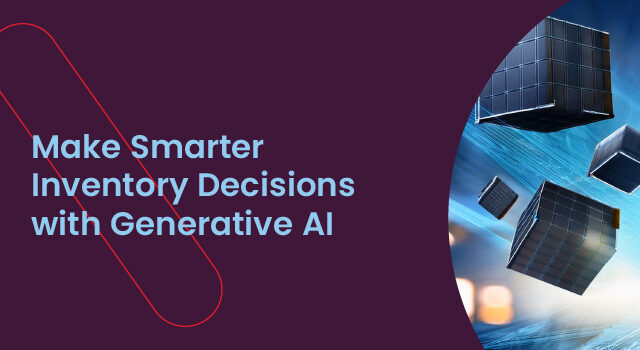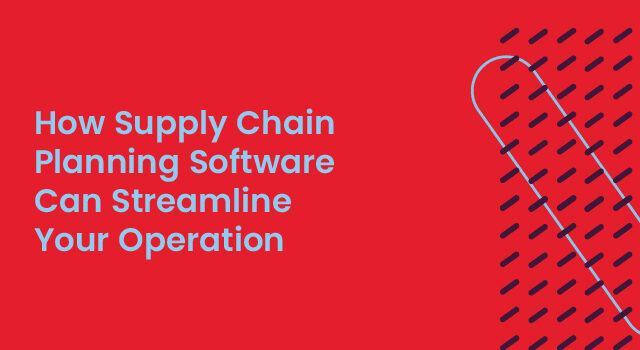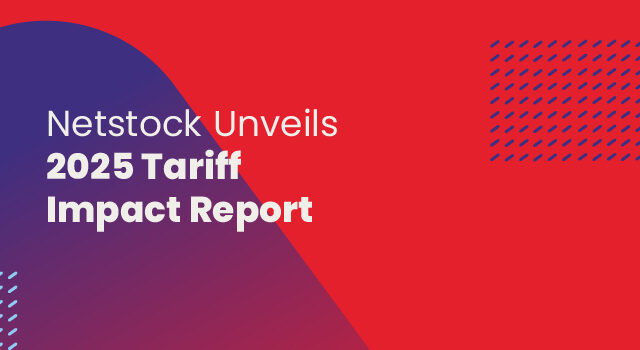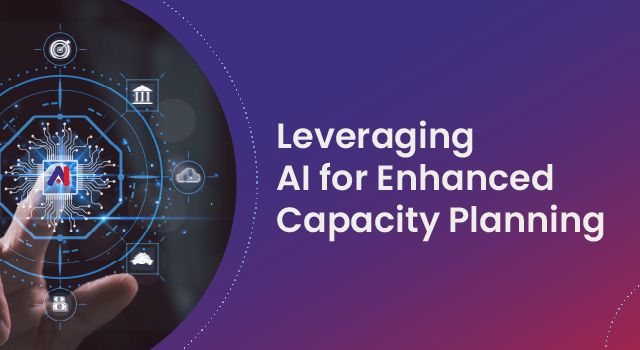Picture this: A boutique owner stares at her holiday inventory plan, remembering last year’s costly mistakes. During peak season, she ran out of bestsellers, losing valuable sales. Meanwhile, unsold holiday items piled up, forcing steep markdowns that ate into profits. Her old forecasting tools simply couldn’t keep pace with rapidly shifting customer preferences. She needs a better approach for this year’s holiday rush.
Generative AI offers a solution to this common inventory challenge. Analyzing vast amounts of data from multiple sources spots patterns that traditional systems miss and transforms them into actionable insights.
The result? Precise forecasts that adapt to market shifts in real-time, helping you stock exactly what you need when you need it. This capability is helpful for businesses wrestling with complex supply chains—it delivers a genuine competitive advantage by cutting waste and optimizing cash flow.
Table of contents
- What is generative AI and how does it apply to inventory management?
- Generative AI has benefits over traditional systems
- The benefits of generative AI for supply chains
- Real-world impact: Rutland case study
- How to get started with generative AI for inventory management
- Experience Netstock’s proven onboarding process
- Why Netstock is the solution you need
- Stay ahead of inventory challenges
What is generative AI and how does it apply to inventory management?
Generative AI systems create new data or predict future events based on patterns they identify within existing datasets. Unlike traditional AI, these systems don’t simply follow predefined rules. Instead, they generate fresh insights and simulate various scenarios to support more thoughtful decision-making. Powered by advanced machine learning techniques, they continuously improve as they process new information.
This technology is reshaping industries worldwide, from manufacturing floors where AI optimizes production schedules to retail environments where it personalizes customer experiences.
In inventory management, these systems deliver specific advantages for manufacturers, distributors, and retailers:
- For manufacturers: AI forecasts component needs based on production schedules, reducing line stoppages while minimizing excess raw materials.
- For distributors: Automated purchase order recommendations adjust to real-time demand fluctuations across multiple warehouses, balancing stock levels enterprise-wide.
- For retailers: Seasonal demand patterns are analyzed alongside external factors like weather and local events to optimize store-specific inventory.
Generative AI has benefits over traditional systems
Traditional systems cannot process the datasets that AI tools can. The sheer volume of data analysis possible with AI reveals patterns not discernable from conventional systems. Quick and accurate demand systems allow management to respond quickly to changing demand. AI learns continuously, adapting to new information for improved and more reliable forecast accuracy.
The benefits of generative AI for supply chains
Generative AI brings several benefits to supply chains, including:
Enhanced demand forecasting
AI systems predict demand precisely using vast data sets. They can recognize patterns that traditional systems often miss. They analyze vast datasets, including sales, seasonal trends, and external data like economic indicators, weather patterns, and customer behaviors.
Machine learning algorithms draw correlations from the data and make forecast changes based on these. Better forecasting enables the implementing more responsive systems like Just-in-Time, which offers substantial stock reductions.
In marketing, AI clusters customers according to various marketing and demographic aspects. Clustering enables marketers to tailor messages for different market segments.
Major retailers optimize their on-hand stock based on AI forecasts. AI helps reduce food waste in large food retailers by meeting customer demand for perishables without excess.
Cost optimization and waste reduction
Through stock optimization strategies and automated replenishment, AI-based inventory systems reduce costs and waste. Lower inventories minimize capital investment and storage expenses. The risk of obsolescence decreases with stock. More accurate forecasting and dynamic order placement reduce over-buying, ensuring that stocks arrive as needed.
Real-Time insights into better decision-making
AI-driven analytics can give your business real-time data so that you can react quickly to market changes. It scans sales data, competitor pricing, and external economic indicators to detect emerging patterns.
Machine learning models trigger real-time alerts of unexpected changes. You can use this data to adjust pricing, procurement, and inventory levels. You can change your prices according to demand, competitor activity, and seasonal trends to maximize profits.
Discover how Netstock’s AI Tools eliminates inventory guesswork →
Case Study: Rutland achieves inventory success
Rutland UK, a specialist in door closers and fire-rated hardware, faced several inventory challenges. Issues included excess stock, cash flow constraints, and long lead times. The company managed its inventory with spreadsheets until it replaced this inefficient system with Netstock’s machine-learning and AI systems integrated with Sage 200.
They quickly reaped the benefits of:
- Improved inventory efficiency: Stock turnover rose from 1.9 to 2.5.
- Higher fill rate: Customer order fulfillment rose from 92% to 97%, and sales increased.
- Time savings: Order processing time was cut from a day to one hour.
- Enhanced visibility: A real-time dashboard enabled better forecasting and demand planning.
- Better lead time management: Despite supply chain disruptions, stock availability remained strong.
“Netstock doesn’t just offer software—they become inventory partners,” notes a Rutland representative. “They took time to show us exactly how their forecasting engine works, which helped us create better predictions. Their team consistently shares practical inventory management techniques that have transformed our approach” – Purchasing Director at Rutland
How to get started with generative AI for inventory management
Ready to transform your inventory approach? Follow these practical steps:
Evaluate your current inventory system
Before implementing AI solutions, assess your existing setup. Identify current pain points, such as excessive stockouts in your retail locations, overflowing manufacturing components, or imbalanced stock levels in distribution centers. Assess whether your system can integrate with AI tools and what specific gaps need addressing.
Choose the right solution for your industry
Select a solution with AI functionality tailored to your business type. Manufacturing operations benefit from solutions that understand production cycles and material requirements planning. Wholesale distributors need tools that manage multi-location inventory optimization. Retailers require systems that handle seasonal demands and consumer trends.
Netstock is designed to tackle the unique challenges faced by businesses in manufacturing, distribution, retail, and specialized sectors like automotive, food and beverage, and building supplies.
- Manufacturing specialists get production-aligned forecasting that balances raw materials with finished goods inventory
- Distributors receive multi-warehouse optimization to prevent stockouts at one location while excess sits at another
- Retailers benefit from seasonal demand planning that responds to rapidly changing consumer preferences
Experience Netstock’s proven onboarding process
Unlike complex software implementations that disrupt operations, Netstock’s onboarding follows a streamlined approach:
- Discovery: Netstock’s team evaluates your specific inventory challenges and business requirements
- Solution building: Your system is configured to address your industry-specific needs
- Integration: Quick connection to your existing ERP system (typically completed within days)
- Data refinement: Expert-guided cleaning of your inventory data to ensure accurate forecasting
- Training: Practical, hands-on instruction for your team focused on three key areas: setting goals, predicting demand, and optimizing orders
Most importantly, you’ll work with dedicated onboarding specialists who understand your industry’s unique inventory challenges. This personalized approach ensures you’ll see tangible results quickly—typically within weeks, not months.
Learn more about Netstock’s Learning Academy
Why Netstock is the solution you need
Netstock’s supply and demand planning solutions monitor inventory in real time and automate order replenishment. Automation, precise demand forecasts, and accurate reporting functions tighten inventory management, resulting in lower inventory costs and fewer stock-outs.
Netstock automatically calculates optimal stock levels based on real-time demand, supplier lead times, and safety stock. The system integrates with your current ERP, so the transition is quickly accomplished. Netstock provides a clear view of your inventory KPIs on single-view dashboards, making tracking and acting on your metrics easy. Automated tasks free up staff members to do other tasks and reduce errors and stock discrepancies that can lead to stock-outs or excess inventory.
Netstock’s AI tools are purpose-built, designed to make inventory management smarter, faster and more accurate. The AI tools will quickly work through your inventory data to give you the right answers you need – doing the heavy lifting while freeing up your time to focus on more strategic tasks.The Dashboard Analyzer simplifies complex charts into executive summaries with key takeaways. Item Analyzer helps you optimize inventory levels by providing both immediate and long-term solutions. Item Troubleshooter empowers you to resolve inventory issues independently with clear explanations and practical fixes. Report Explainer breaks down reports into easy-to-understand overviews, so you can quickly grasp their purpose and impact.
Watch Netstock tackle real inventory challenges
Stay ahead of inventory challenges
Forward-thinking businesses are already using generative AI to outpace competitors. They’re meeting customer demand more reliably, cutting inventory costs, and boosting sales—all with fewer resources and less effort than traditional approaches require.
When supply chains face disruption, having smart inventory systems isn’t optional—it’s essential for survival. Don’t let outdated inventory practices hold your business back.
Take control of your inventory future today!
FAQs
How does generative AI differ from traditional inventory forecasting?
Unlike basic systems that rely on historical averages, generative AI processes multiple data points simultaneously, spots hidden patterns, and adapts to market shifts in real-time. This creates a more accurate picture of future inventory needs even as conditions change.
What business results can I expect with Netstock?
Netstock users free up working capital by optimizing inventory levels, often reducing inventory by 25% while increasing fill rates by 15%. This means fewer stock-outs, more fulfilled orders, and improved cash flow. While results vary by industry, many businesses see measurable bottom-line improvements within months.
Is technical expertise needed to use Netstock’s AI tools?
No special training is required at all! Netstock’s AI tools are user-friendly and give you the answers – not just more data to review. The AI Report Explainer tool, for example, will review all the data in your reports and so you understand the report’s purpose with a clear and easy-to-read overview.
Will Netstock work with our current business systems?
Yes. Netstock connects seamlessly with over 60 ERP systems, including Sage, Acumatica, Microsoft Dynamics, and NetSuite. Most companies are up and running within a couple of weeks, not months.
How does the system handle unexpected supply disruptions?
Netstock monitors your supply chain, automatically adjusting for supply and demand risk. Netstock automatically adjusts your safety stock levels and alerts you to potential issues before they become problems. The system learns from each disruption, making your inventory management increasingly resilient.





